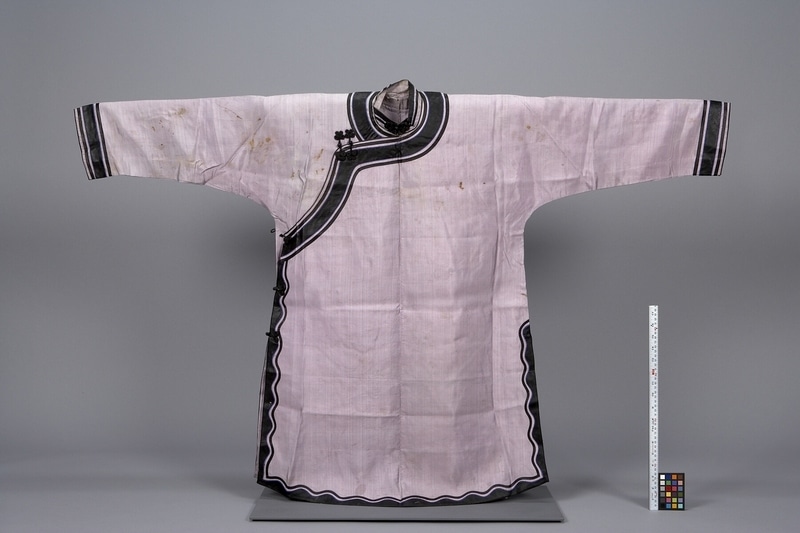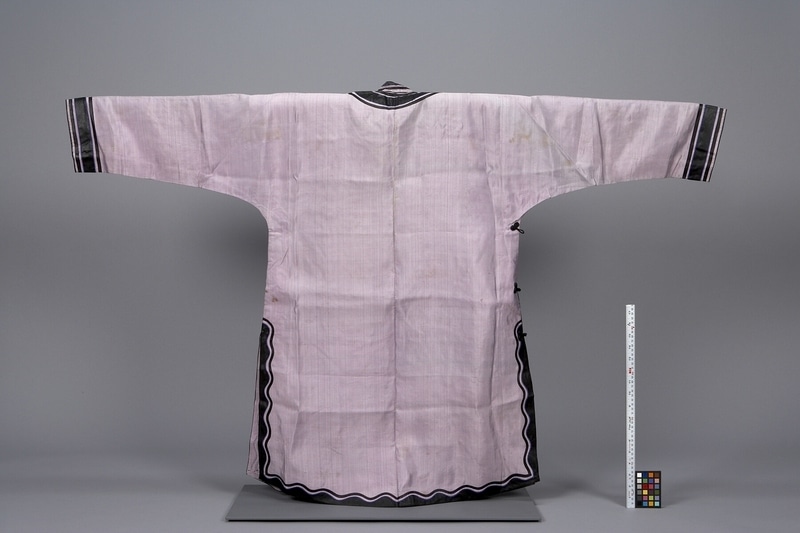Robe Item Number: 2506/4 from the MOA: University of British Columbia


Description
Short robe of lavender silk. End of sleeves encircled by three black bands and two blue stripes at the cuffs and collar, and wavy bands of black and blue silk along the sides and bottom of the body. An opening flap ovelaps on the right side in a curve from the neck to below the right arm. There are six frog closures along the opening and there is a pocket on the inside flap. There is a slit at the bottom of each side seam. The frog closures consist of two flourishes of piping attached on either side of the front opening, one with a loop and the other with a ball-shaped toggle.
History Of Use
Everyday wear. This style of woman's suit (aoku) originated with the Manchus, a northern nomadic tribe who ruled during the Qing dynasty (1644-1911). Both men and women wore the same style of suit until men stopped wearing the overlapping top. Women continued to wear this style until the mid-to-late 19th century. Originally worn over matching pants; later worn over a skirt by the middle and upper classes.
Narrative
Sold through a consignment store in Vancouver, by a great-grandchild of the original owners.
Item History
- Made in Victoria, British Columbia, Canada between 1875 and 1920
- Owned by Sack Lee Yew
- Owned by Tapestry Vintage Clothing before February 16, 2000
- Received from Tapestry Vintage Clothing (Seller) and Fyfe-Smith Memorial Oriental Collection Fund (Funding source) on February 16, 2000
What
- Name
- Robe
- Identification Number
- 2506/4
- Type of Item
- robe
- Material
- silk fibre and dye
- Manufacturing Technique
- hand sewn and appliqued
- Overall
- height 96.5 cm, width 141.5 cm
Who
- Culture
- Chinese
- Previous Owner
- Sack Lee Yew and Tapestry Vintage Clothing
- Received from
- Tapestry Vintage Clothing (Seller) and Fyfe-Smith Memorial Oriental Collection Fund (Funding source)
Where
- Holding Institution
- MOA: University of British Columbia
- Made in
- Victoria, British Columbia, Canada
When
- Creation Date
- between 1875 and 1920
- Ownership Date
- before February 16, 2000
- Acquisition Date
- on February 16, 2000
Other
- Item Classes
- textiles
- Condition
- good
- Accession Number
- 2506/0004